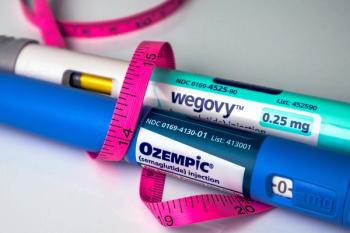
Brief pharmacist intervention key to improved med adherence
When the Pennsylvania Project evaluated the impact on medication adherence of screenings and brief interventions by pharmacists, it found improvement in both adherence rates and cost savings.
In 2010-2011, Rite Aid pharmacists participated in the Pennsylvania Project, a large-scale study that evaluated the impact of pharmacist screening and brief intervention on medication adherence in five medication classes. According to a report of the findings published in the August issue of Health Affairs, medication adherence rates rose among patients who consulted with pharmacists, and savings in healthcare spending were also achieved.
Also participating in the study were Highmark, a regional Blue Cross Blue Shield health plan; Gateway, a Medicaid plan associated with Highmark; the University of Pittsburgh School of Pharmacy; and CECity, a technology company. Pharmacy Quality Alliance provided funding for the project.
The study
Pharmacists used two different tools to screen patients - an adherence estimator for patients receiving new prescriptions, and an outcome rating scale for patients refilling prescriptions. Patients in the intervention group who scored higher than a specific threshold for either screening episode received a brief pharmacist consultation of two to five minutes.
Pharmacists who participated in the interventions had been trained in motivational interviewing techniques.
“After completion of the training, all pharmacists met at least minimal proficiency as determined by a proficiency checklist. To be deemed proficient, pharmacists were observed as they role-played effectively administering screenings and brief interventions with standardized patient cases,” wrote Janice L. Pringle, director, Program Evaluation and Research Unit, University of Pittsburgh School of Pharmacy in Pennsylvania, and her coauthors.
The findings
Medication adherence improved in the intervention group over a 330-day intervention period in all five medication classes: calcium channel blockers, oral diabetes medications, beta blockers, statins, and renin angiotensin system antagonists (RASA). Patients in the control group had a slight drop in adherence rates for all medication classes except for statin therapy.
The study also tracked healthcare costs through 2010-2011. Intervention group patients who received oral diabetes medications spent $341 less annually than the control group did. In addition, intervention group patients on statin therapy saved $241 annually. The other medications did not demonstrate any significant healthcare cost savings, the authors noted.
“Analyses of monthly and quarterly costs demonstrated that the improvement in healthcare costs for patients using statins and oral diabetes medications increased steadily over the twelve-month period,” Pringle and her coauthors noted.
The authors also pointed out that payers could eventually benefit through decreased healthcare costs and improved CMS Star Ratings measurements.
Newsletter
Pharmacy practice is always changing. Stay ahead of the curve with the Drug Topics newsletter and get the latest drug information, industry trends, and patient care tips.




